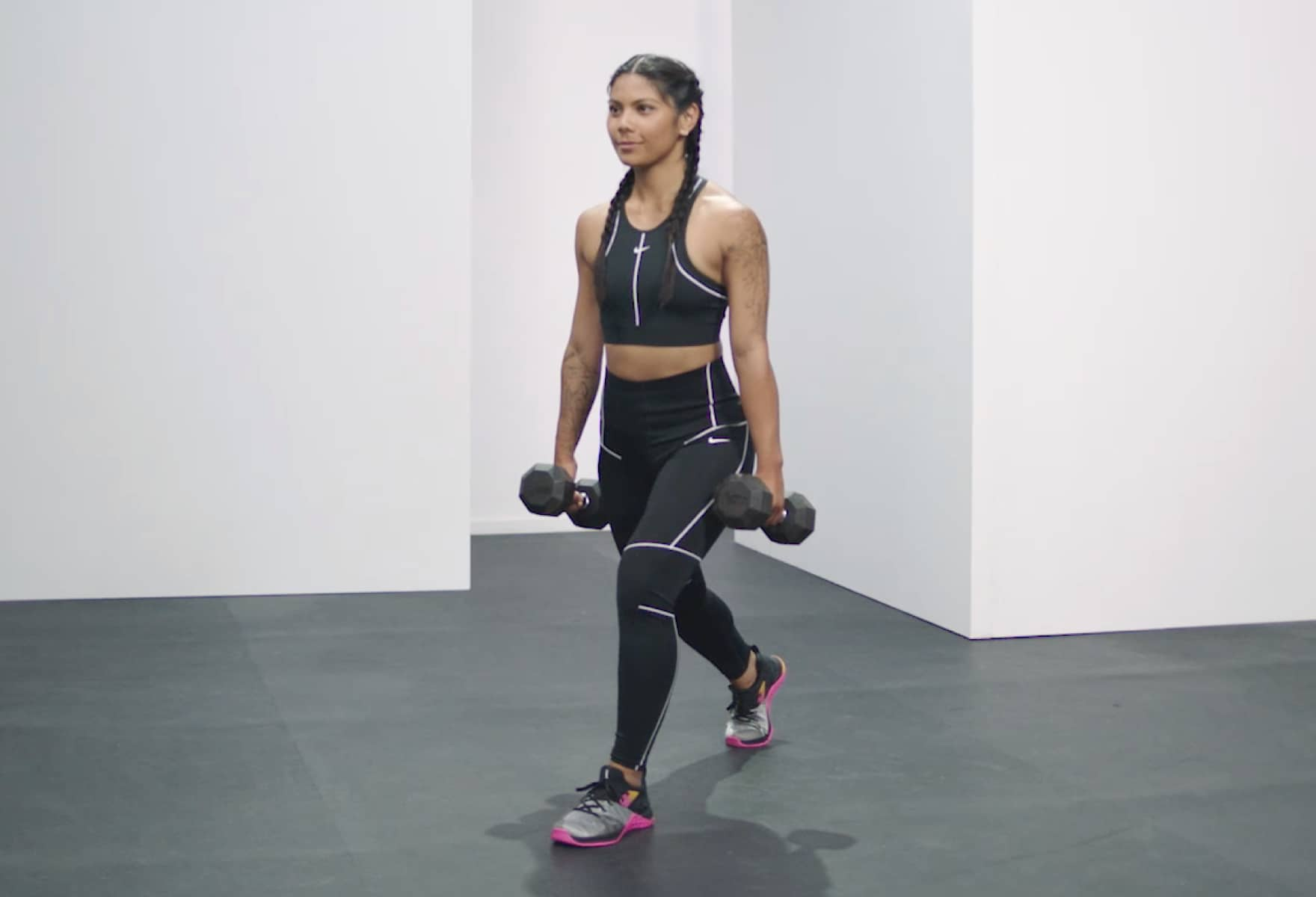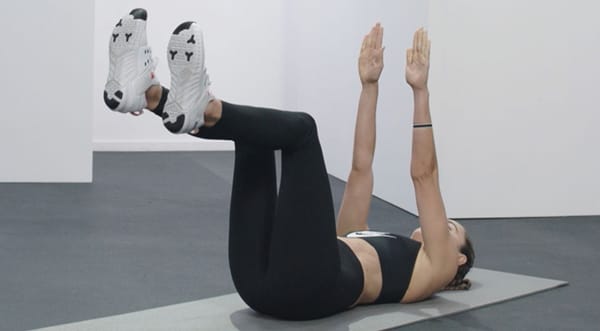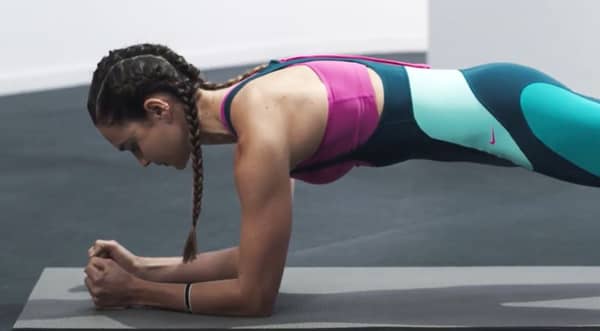How—and Why—to Do a Split Squat
Coaching
By Nike Training
By Nike Training
Use this simple exercise to build strength and endurance through your glutes and quads.
A split squat can help you build strength and endurance through your glutes and quads, and also lights up your abs and obliques. Join Nike Master Trainer, Betina Gozo, as she steps you through the correct way to do a split squat and why you should be adding it to your next leg day.
It might look like a lunge and sound like a squat, but the split squat is its very own move with its very own benefits. Unlike a lunge, a split squat is static (you begin and end from a staggered-stance position rather than stepping or walking your feet through reps) and most of the work happens in the front leg. Think of it like an air squat with your feet split. Nike Master Trainer Betina Gozo walks you through what you need to know about the move.
Muscles You'll Work
The split squat primarily works your glutes and quads, but don't think this is strictly a lower-body exercise. The staggered stance fires up your abs and obliques to keep you upright and balanced.
Use this simple exercise to build strength and endurance through your glutes and quads.
A split squat can help you build strength and endurance through your glutes and quads, and also lights up your abs and obliques. Join Nike Master Trainer, Betina Gozo, as she steps you through the correct way to do a split squat and why you should be adding it to your next leg day.
It might look like a lunge and sound like a squat, but the split squat is its very own move with its very own benefits. Unlike a lunge, a split squat is static (you begin and end from a staggered-stance position rather than stepping or walking your feet through reps) and most of the work happens in the front leg. Think of it like an air squat with your feet split. Nike Master Trainer Betina Gozo walks you through what you need to know about the move.
Muscles You'll Work
The split squat primarily works your glutes and quads, but don't think this is strictly a lower-body exercise. The staggered stance fires up your abs and obliques to keep you upright and balanced.
Why You Should Be Doing a Split Squat
- Like any unilateral exercise (a movement that works one side of the body at a time), this can reveal imbalances to help you build strength in both legs evenly. But because you're removing the stepping motion of a lunge, you can better focus on your core and range of motion.
- The move also trains you to power off of one leg, which comes in handy whether you're practising football drills or chasing after your dog.
- Because your feet are fixed, there's always tension on your front quad, which means you'll build muscular endurance in your upper leg with every rep.
- It builds foundational strength that can support more demanding single-leg exercises, like the single-leg Romanian deadlift and pistol squat.
When to Do It
Add split squats to your next leg-day routine, or incorporate them into a full-body strength session. Begin with 3 sets of 10 to 12 reps per leg, working slowly through each rep to emphasise proper form. Quick set-up tip: To get the spacing of your legs just right, you may want to start in the bottom position of the exercise (Step 2).
How to Do a Split Squat
- Stand with your feet hip-width apart and your hands on your hips or together in front of your chest. Step one leg back and keep that heel off the floor, to start.
- Shift your weight onto your front leg and keep your torso upright as you lower, bending your legs until they form 90-degree angles with your back knee hovering just above the floor.
- Squeeze your glutes and drive through your front foot to return to the starting position. Don't worry if your legs aren't completely straight; focus on engaging your glutes, then pushing your front knee out as you lower so your leg doesn't cave in. That's 1 rep.
- Do all of the reps on one side, then switch legs and repeat.

Why You Should Be Doing a Split Squat
- Like any unilateral exercise (a movement that works one side of the body at a time), this can reveal imbalances to help you build strength in both legs evenly. But because you're removing the stepping motion of a lunge, you can better focus on your core and range of motion.
- The move also trains you to power off of one leg, which comes in handy whether you're practising football drills or chasing after your dog.
- Because your feet are fixed, there's always tension on your front quad, which means you'll build muscular endurance in your upper leg with every rep.
- It builds foundational strength that can support more demanding single-leg exercises, like the single-leg Romanian deadlift and pistol squat.
When to Do It
Add split squats to your next leg-day routine, or incorporate them into a full-body strength session. Begin with 3 sets of 10 to 12 reps per leg, working slowly through each rep to emphasise proper form. Quick set-up tip: To get the spacing of your legs just right, you may want to start in the bottom position of the exercise (Step 2).
How to Do a Split Squat
- Stand with your feet hip-width apart and your hands on your hips or together in front of your chest. Step one leg back and keep that heel off the floor, to start.
- Shift your weight onto your front leg and keep your torso upright as you lower, bending your legs until they form 90-degree angles with your back knee hovering just above the floor.
- Squeeze your glutes and drive through your front foot to return to the starting position. Don't worry if your legs aren't completely straight; focus on engaging your glutes, then pushing your front knee out as you lower so your leg doesn't cave in. That's 1 rep.
- Do all of the reps on one side, then switch legs and repeat.
Make It Easier
Cut the number of reps or sets, or shorten the range of motion by only lowering halfway.
Make It Harder
Hold a dumbbell or kettlebell at your chest, or one in each hand with your arms extended by your sides. You could also rack a barbell across your back. Or prop the top of your back foot on a sturdy bench or chair to perform the more advanced version, called a Bulgarian split squat.
Train With Us
Tap into the ultimate training resource with the Nike Training Club App. From expertly designed workouts to holistic tips on nutrition, mindset, recovery and sleep, NTC has everything you need to perform your best.

Make It Easier
Cut the number of reps or sets, or shorten the range of motion by only lowering halfway.
Make It Harder
Hold a dumbbell or kettlebell at your chest, or one in each hand with your arms extended by your sides. You could also rack a barbell across your back. Or prop the top of your back foot on a sturdy bench or chair to perform the more advanced version, called a Bulgarian split squat.
Train With Us
Tap into the ultimate training resource with the Nike Training Club App. From expertly designed workouts to holistic tips on nutrition, mindset, recovery and sleep, NTC has everything you need to perform your best.
Join Nike Training Club
Get access to our world-class experts and trainers for help staying active and healthy.

Join Nike Training Club
Get access to our world-class experts and trainers for help staying active and healthy.




